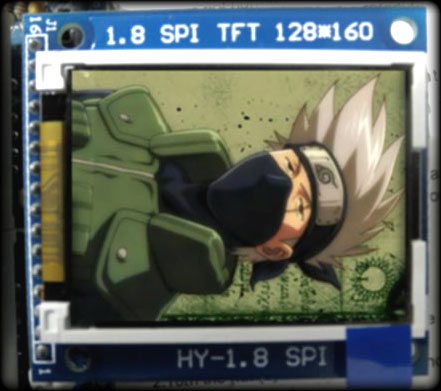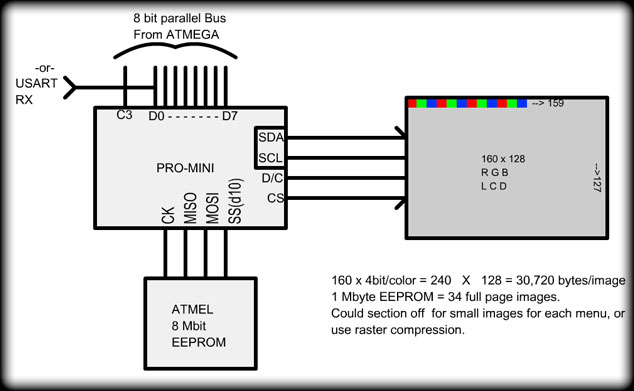|
My first intention was to use a standard cheap, easy to use 7-segment LED
display (or 2...or 3) to run menus and selections in this box, but after a
while it seemed a bit crazy considering the amount of characters and data
that needs displaying. Especially when doing a song setup. Then an OLED
display was considered, but it's so tiny for an application that leaves the
panel just above floor height and, even though bright, would be like
watching a TV in your neighbors living room!
|
|||
|
I've left the old
page for future reference for perhaps a different project (I've bought one
so it *will* be used eventually, maybe for a wrist watch controller or
something) The LCD I have chosen is a 160 x 128 RGB. The S6D02A1A01 pdf is long and complex, but became clearer after a day or two of studying it. If you've been LCD searching on Ebay lately, you've probably seen it. The companies (China) that sell them offer no info at all on even what chip it uses. I had to search around until I found a board that looks the same with the same markings. It's a pretty simple interface: Data Clk D/C CS. The D/C being the data/command selector. |
  |
||
I've worked out a simple schematic above using an Arduino Pro-Mini (AT328)
but the interface to the ATMEGA has already changed. Everything is
connecting via USART, just to speed up the design process. The 8Mbit EEPROM
is to store all the fancy graphics, character data, and menus.
Trying to work out a character vs. graphics vs. animation on any display is
kinda tricky for me as I haven't done much (outside of the PC) so this'll be
a real learning experience. Also the size of this display must be taken into
consideration. For example, when selecting a song on stage, I don't want a
20 character long name of the song coming up as from standing distance, 5
feet for me, I won't be able to read it at all. On the other hand, when
setting up a song, selecting filenames etc, it'd be nice to have a few
characters to read...at least 12.
Next I tried some 2 frame animations, which would be good for choosing a channel ( rotary encoders are also buttons ) to modify EQ on, or when setting up a Preset, whatever.
| |||




